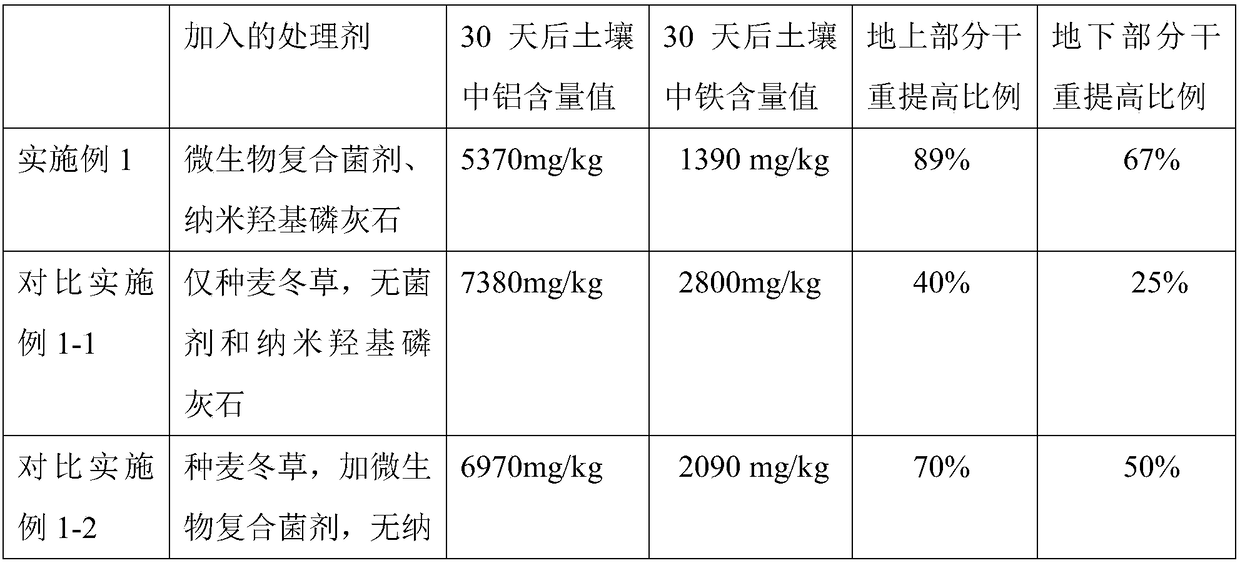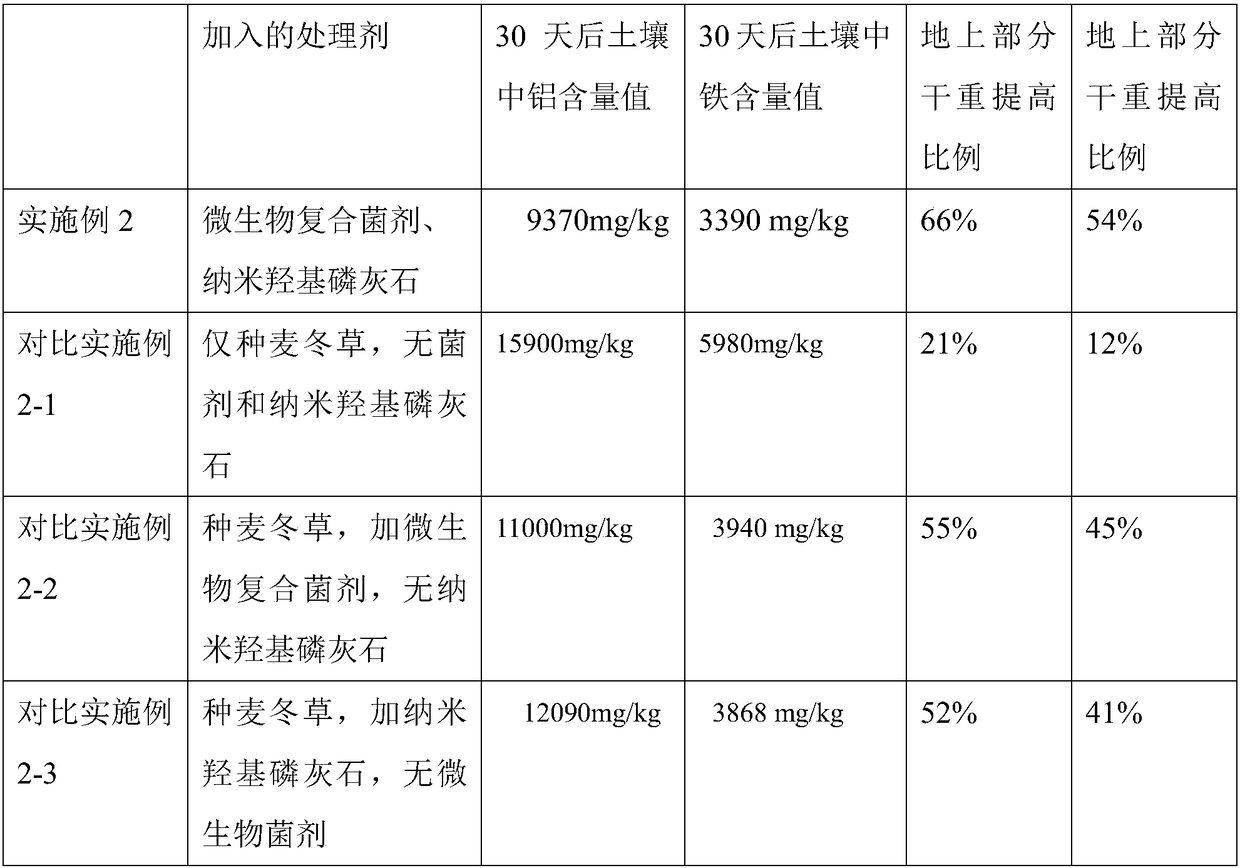Method for biological remediation of iron-containing and aluminum-containing mixed contaminated soil by using nano-material
A bioremediation and nanomaterial technology is applied in the field of bioremediation of mixed contaminated soil containing iron and aluminum, which can solve the problems of being unsuitable for multiple heavy metal compound pollution, limiting the application of phytoremediation technology, and low biomass, and achieves significant heavy metal absorption and enrichment. set effect, soil degradation and productivity decline improvement, plant growth promotion effect
- Summary
- Abstract
- Description
- Claims
- Application Information
AI Technical Summary
Problems solved by technology
Method used
Image
Examples
Embodiment 1
[0032] First, establish potted plants that simulate heavy metal-polluted soil, the specific method is: FeSO 4 ·7H 2 O and Al 2 (SO 4 ) 3 18H 2 O Analytical reagents are added in liquid form to ordinary nutrient soil, mixed thoroughly, so that the heavy metal content is 8000mg / kg for aluminum and 3000mg / kg for iron, and it is used after one week of storage, which is the soil for the experiment.
[0033] Then, bioremediate the above-mentioned iron- and aluminum-containing heavy metal-contaminated soil using nanomaterials. Preparatory operations before restoration: take 200g of soil for the experiment, add 200g of nano-hydroxyapatite, mix well, and use it as a mixed soil. Moses Globulus and Surface Glomus are mixed according to the volume ratio of the bacteria suspension at 1:1, which is the microbial compound agent.
[0034] The specific restoration method is: spray the above-mentioned prepared microbial compound bacterial agent around the rhizosphere of the experimental so...
Embodiment 2
[0051] First, establish potted plants that simulate heavy metal-polluted soil, the specific method is: FeSO 4 ·7H 2 O and Al 2 (SO 4 ) 3 18H 2 O Analytical pure reagents are added in liquid form to ordinary nutrient soil, mixed thoroughly, so that the heavy metal content is 16000mg / kg for aluminum and 6000mg / kg for iron, and it is used after one week of storage, which is the soil for experiment.
[0052] Then, bioremediation is carried out on the soil contaminated by heavy metals containing iron and aluminum using nanomaterials. The preparatory operation before bioremediation is as follows: take 200g of soil for the experiment, add 200g of nano-hydroxyapatite, and mix well as a mixed soil. Glomus terrestrialis and Glomus moses were prepared according to the volume ratio of the bacterial suspension at 1:1 to obtain the microbial composite agent.
[0053] The specific bioremediation method is as follows: soak the Ophiopogon japonicus plant to be moved in the microbial compo...
Embodiment 3
[0068] The method of simulating soil heavy metal pollution in the field was adopted. In Heishui County, Sichuan, a 10m piece of land for planting Chinese herbal medicines was fenced off 2 land, 50cm deep. The surrounding area is sealed with anti-seepage material and filled with local field soil. The heavy metal forms were added to FeSO 4 ·7H 2 O and Al 2 (SO 4 ) 3 18H 2 O solution, mixed thoroughly, stable for one week, the determination of heavy metal content. It has been determined that the soil contains 12680mg / kg of aluminum and 4520mg / kg of iron.
[0069] After mixing Glomus moses and Glomus terrestriale at a ratio of 1:1, the roots of the well-growing Ophiopogon japonicus were soaked in the microbial complex solution for 24 hours, and then planted in the isolated soil artificially simulated by iron and aluminum pollution. A mixed soil with a mass ratio of soil to nano-hydroxyapatite of 1:1 was added to the planting pit. A total of 100 plants were planted. The ...
PUM
 Login to View More
Login to View More Abstract
Description
Claims
Application Information
 Login to View More
Login to View More - R&D Engineer
- R&D Manager
- IP Professional
- Industry Leading Data Capabilities
- Powerful AI technology
- Patent DNA Extraction
Browse by: Latest US Patents, China's latest patents, Technical Efficacy Thesaurus, Application Domain, Technology Topic, Popular Technical Reports.
© 2024 PatSnap. All rights reserved.Legal|Privacy policy|Modern Slavery Act Transparency Statement|Sitemap|About US| Contact US: help@patsnap.com










